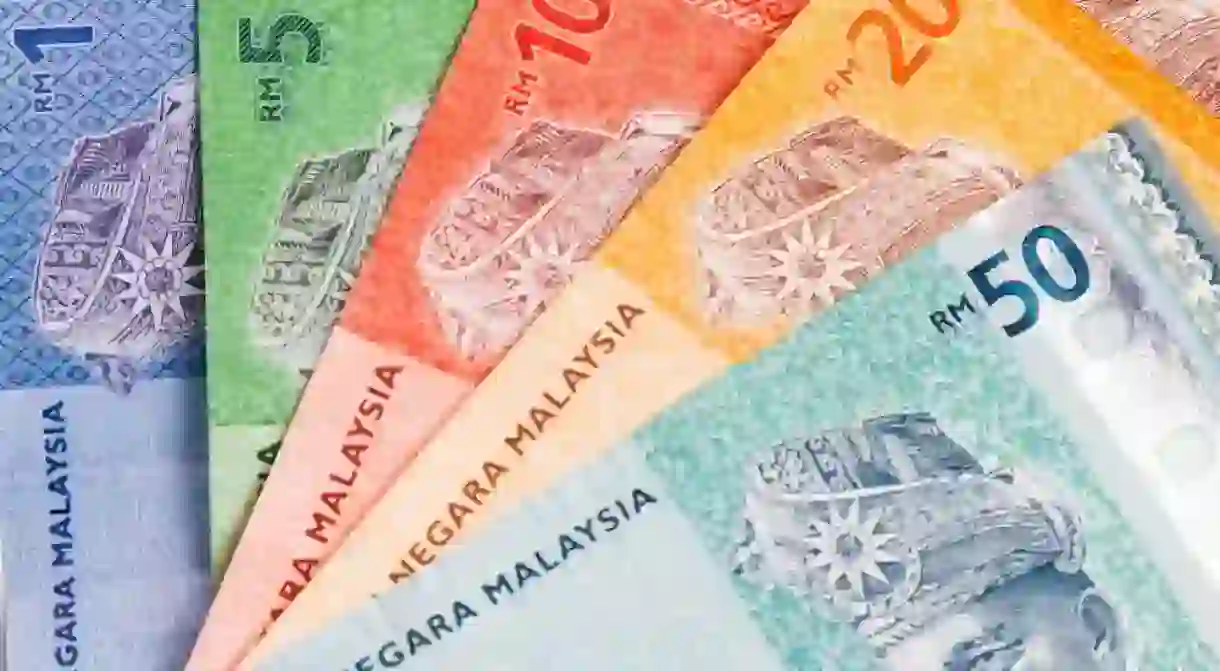MYR: Explaining Ringgit, Malaysia's Currency

Between polymer introductions, pegged and de-pegged currencies, and references to “dollars” and “bucks,” you may be forgiven for being confused. But here we have the notes to navigate this Malaysian wilderness.
A brief history
The word “ringgit’ used to mean “jagged” in Malay, referring to the toothed edges of silver Spanish coins in the 1500s, the start of the Portuguese colonial era in Malaysia.
The modern ringgit currency was introduced in 1967, 10 years after the country’s independence. The first polymer banknotes were introduced in 2012 (fourth series) — RM1 and RM5.
In written form, you may have noticed that the Malaysian ringgit is variously referred to as “RM” or “MYR.” Both are accurate. Locally, “RM” is more widely used. Internationally, “MYR” is more commonly used, notably at currency and trade exchange portals, as this is the ISO 4217 currency code.
The ringgit today
Following the East Asian financial crisis in 1997, the Malaysian national bank (Bank Negara) decided to peg the ringgit to the US dollar, maintaining its exchange rate at 3.80 to USD. The ringgit was also made non-tradeable outside of Malaysia during this period. The ringgit was de-pegged in 2005.
You may hear urbanites referring to local currency in terms of “dollars” or “bucks.” This is partly because it was variously called the Malayan Dollar (pre-independence) and the Malaysian Dollar (until 1975) before the currency name was officially changed to Ringgit and Sen, and partly because “bucks” is just shorter and faster to say than “ring-git.” There may also be some Americanization/neo-imperialism going on, but hey, we’re not here to write a thesis.
Notes
All Malaysian banknotes feature the face of Tunku Abdul Rahman (Malaysia’s first Prime Minister) and the red Hibiscus rosa-sinensis (Malaysia’s national flower).

What will your money get you?
RM1
This polymer note features the traditional Wau Bulan, a moon-kite designed with intricate floral motifs and especially popular in the state of Kelantan. It is one of the national symbols of Malaysia.
RM1 will afford you a Malaysian kuih (traditional cake-isa dessert, typically made with coconut, rice, or tapioca flour), or a cup of kopi ‘O’ (black coffee) at the local kopitiam (coffee shop). This is snack money, basically.
RM5
The second of two polymer notes in Malaysia, RM5 showcases Malaysia’s favorite bird: the Rhinoceros Hornbill, a large, black-feathered, red-horned bird widely found in Malaysian Borneo (Sabah and Sarawak). The bird can live up to 35 years, if not threatened with early death by habitat loss and hunting.
RM5 will get you a bowl of laksa (noodles in soup) at the local kopitiam (coffee shop), or a plate of tomato rice and vegetables at the mamak stall. RM5 is daily pocket money for school kids.
RM10
This note exhibits the largest flower in the world: the Rafflesia, a parasitic flowering plant that can grow up to 39 inches (100 centimeters) in diameter, often found in Malaysian Borneo. These flowers have no stems, leaves, or real roots, and they smell like rotting flesh (hence the nickname, “corpse flower”).
RM10 will buy you a good meal from any kopitiam, or a perfectly-foamed cappuccino from one of the trendy city cafes. Not both.
RM20
Recently introduced in the 2012 series, this note presents two sea turtles—the Hawksbill and Leatherback turtles—both of which are native to Malaysia. If you want to visit the east coast for the turtle nesting season, you’d best go between April and October (before the monsoon hits).
RM20 will lend you a movie ticket (undiscounted movie tickets typically cost RM16-18), plus a bottle of water. Not enough for popcorn, sorry.
RM50
Malaysia is the world’s second largest producer of sustainable palm oil, so it’s only fair that palm oil trees get their spot on the country’s RM50 note. More than 600,000 people work in the palm oil industry in Malaysia.
With an RM50, you can afford a good book, a semi-fancy dining experience, or a spa massage. It’s almost like being rich.
RM100
Featuring the majestic Mount Kinabalu in Sabah and the limestone rock formations of the Gunung Api valley in Sarawak (both declared World Heritage Sites by UNESCO), the RM100 note is a celebration of Malaysia’s natural wonders.
You won’t usually find RM100 floating around, but you may or may not receive it from your closest family, in red or green packets during festivities. With this kind of money, you can afford a mid-range Airbnb stay in central Kuala Lumpur, or a nice heritage hotel room in Penang.
Tips on splashing your cash
If you’re splashing it out in a sprawling metropolis like Kuala Lumpur, save your cash for the mobile street vendors (have you tried the street food?) and night bazaars. Most major shopping and food outlets will accept credit and debit cards, including American Express and Alipay.

The Malaysian currency has strengthened in 2018 (the average USD-to-MYR exchange has dropped from 4.28 in 2017 to 3.9 in 2018), so if you’re visiting from countries like Singapore and the US, you might have to fork out a little more than usual. Don’t be surprised if your usual USD $30 gets you a one-way trip from Penang to KK, but not the return.
In Malaysia, you’re not expected to tip—so whether it’s at a food outlet or a hawker stall, what you see (on the bill) is what you pay. Service charge and GST (Goods and Services Tax) are usually included in your bill, and after seeing the final amount, you probably wouldn’t want to tip extra.
If you’re looking to save instead of splash, cut down on your drink. Malaysia’s alcohol tax rate is the third highest in the world, and if you curtail your cocktails (or only save it for Langkawi), you’ll make your liver and your wallet very happy.













